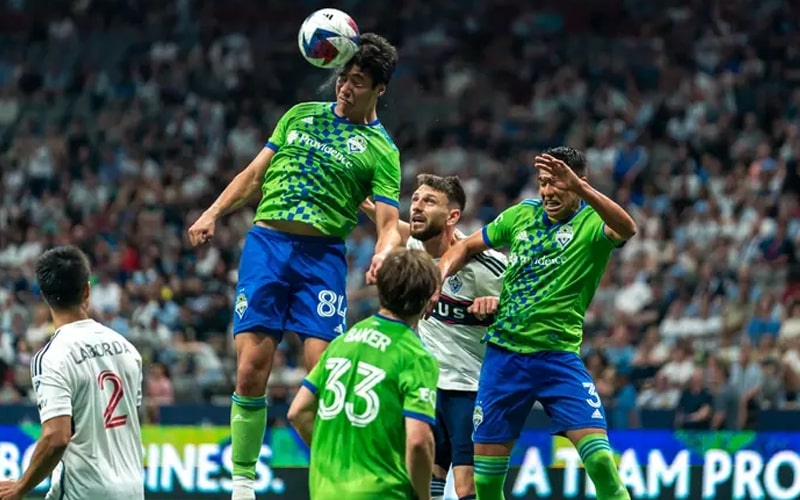MLS operates under a unique financial structure compared to other top soccer leagues around the world. One of the most notable features of this structure is the league’s salary cap. This article will explore the MLS salary cap, how it impacts team composition, and its implications for competitive balance within the league.
Overview of the MLS Salary Cap
The MLS salary cap is a limit on the total amount of money that a team can spend on player salaries. The cap is designed to promote competitive balance among teams, prevent excessive spending, and ensure the league’s financial stability. The cap is adjusted annually, based on factors such as league revenue, player salaries, and the cost of living.
The Designated Player Rule and Its Impact
In 2007, MLS introduced the Designated Player Rule, which allowed teams to sign up to three players whose salaries would not be entirely counted towards the salary cap. This rule, nicknamed the “Beckham Rule” after David Beckham’s high-profile move to the LA Galaxy, was designed to bring more star power and talent to the league. The Designated Player Rule has indeed attracted notable international players to MLS, but it has also raised questions about competitive balance as wealthier teams can afford to sign big-name players.
Designated Players and Targeted Allocation Money
To accommodate the signing of high-profile players and allow teams some flexibility in roster building, MLS has implemented mechanisms such as the Designated Player (DP) rule and Targeted Allocation Money (TAM).
- Designated Players: The DP rule allows teams to sign up to three players whose salaries exceed the maximum budget charge. This enables clubs to bring in star talent without having their entire salary count against the cap.
- Targeted Allocation Money: TAM is an additional pool of funds provided by the league that teams can use to sign or re-sign players who earn more than the maximum budget charge but are not Designated Players. This mechanism allows clubs to strengthen their rosters with key players while maintaining the overall salary cap structure.
What is Targeted Allocation Money (TAM)?
In 2015, MLS introduced Targeted Allocation Money (TAM) as a mechanism to help teams sign and retain high-quality players without breaking the salary cap. TAM can be used to pay down the salary cap hit of a player, enabling teams to sign more high-caliber talent. This mechanism has led to an increase in the overall quality of play in the league, as teams can now afford to sign and retain more talented players. However, some argue that TAM has further widened the gap between the league’s “haves” and “have-nots,” as wealthier teams can better leverage this resource to build stronger rosters.
Homegrown Players and Their Contribution
Another aspect of the MLS salary cap structure is the Homegrown Player Rule. This rule allows clubs to sign players from their own academies without having their salaries count towards the cap. This incentivizes teams to invest in youth development and create a pipeline of talent from within their organizations. As a result, many teams have started to focus on developing their academies, and several notable players have emerged from these programs. These homegrown players not only help teams stay within the salary cap but also provide a foundation for long-term success.
Addressing Potential Competitive Imbalance
To address concerns about competitive imbalance, MLS has implemented various mechanisms to ensure that all teams have an opportunity to compete at a high level. The league’s most notable competitive balance mechanism is the allocation process, which distributes top domestic and international talent among teams. Additionally, the league uses the MLS SuperDraft to allocate college talent and has introduced measures like the Expansion Draft to ensure that new teams can build competitive rosters from the start.
Evaluating the Success of the Salary Cap
The salary cap’s success in maintaining competitive balance in MLS is a subject of ongoing debate. Critics argue that the cap has not prevented the formation of “dynasties” and that wealthier teams still have a significant advantage. However, proponents of the cap highlight the league’s parity compared to other soccer leagues around the world, where a small number of teams typically dominate. While there is no definitive answer to this question, the salary cap has undoubtedly shaped the development and growth of MLS in its first few decades.
Effects on Team Composition
The MLS salary cap has a significant impact on team composition and roster building. Due to the financial constraints, clubs must be strategic and creative when assembling their squads. Some of the key effects of the salary cap on team composition include:
Development of Domestic Talent
With limited resources, MLS clubs often prioritize the development of domestic talent. Investing in academies and scouting local players allows clubs to identify and develop prospects who can contribute to the first team without breaking the bank. This focus on homegrown talent has led to the emergence of several top American and Canadian players.
Reliance on Cost-Effective Foreign Players
While MLS clubs do sign high-profile foreign players as Designated Players, they must also identify cost-effective international talent to stay within the salary cap. This has led to an influx of players from Latin America, particularly Argentina, who have made a significant impact in the league. The scouting networks and relationships that MLS clubs have established in these regions have been critical in identifying and signing these players.
Importance of Versatile Players
In a league with a salary cap, roster spots are at a premium. As a result, clubs often prioritize signing versatile players who can fill multiple positions on the field. This approach provides coaches with more tactical flexibility and helps teams adapt to injuries or other unexpected situations.
Competitive Balance
One of the primary goals of the MLS salary cap is to promote competitive balance within the league. By limiting the financial resources available to clubs, the salary cap prevents wealthier teams from dominating the league through excessive spending. Some key aspects of the competitive balance within MLS include:
Parity Among Teams
The salary cap has helped create a relatively level playing field among MLS clubs, with few teams dominating the league for extended periods. This parity is evident in the number of different clubs that have won MLS Cup or reached the playoffs over the years. While some clubs have enjoyed sustained success, the cap has prevented the formation of super-teams that dominate the competition.
Potential Disadvantages in International Competitions
While the salary cap has contributed to competitive balance within MLS, it may put the league’s clubs at a disadvantage in international competitions, such as the CONCACAF Champions League. Clubs from other leagues, particularly Liga MX, often have larger budgets and can spend more on player salaries, which can result in deeper and more talented rosters. This financial disparity has made it challenging for MLS clubs to compete with their regional counterparts on the international stage.
Impact on Player Movement and Trades
The salary cap also affects player movement and trades within MLS. To stay within the cap, clubs must carefully manage their roster and make tough decisions about which players to retain, trade, or release. This can lead to increased player movement as clubs look to maximize their resources and stay competitive within the cap’s constraints.
Additionally, the cap has led to the development of unique trade mechanisms within MLS, such as trading allocation money or international roster slots. These trades can help clubs free up cap space or acquire additional resources to improve their rosters.
Conclusion
The MLS salary cap is a critical component of the league’s financial structure and plays a significant role in shaping team composition and competitive balance. While the cap has contributed to parity among clubs and fostered the development of domestic talent, it has also presented challenges for MLS teams in international competitions. As the league continues to grow and evolve, the salary cap will remain a key factor in shaping the league’s competitive landscape and the strategies that clubs employ to build their rosters.




